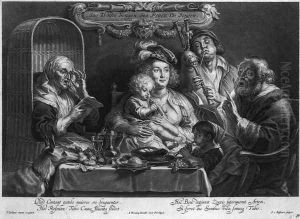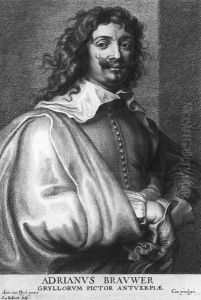Schelte Adamsz. Bolswert Paintings
Schelte Adamsz. Bolswert, also known as Schelte à Bolswert, was a notable Dutch engraver born in the year 1586 in Bolswert, in the Dutch Republic (nowadays Bolsward in the Netherlands). He hailed from a family of artists, with his brother Boetius Adamsz. Bolswert also being a renowned engraver. Schelte is best remembered for his works that reflect the Baroque style, which was prevalent in Europe during his lifetime.
Bolswert began his artistic career in Amsterdam but eventually moved to Antwerp, which was a major hub for artists and the art market during the 17th century. In Antwerp, he became associated with the workshop of Peter Paul Rubens, one of the most influential Baroque painters of his time. Bolswert specialized in translating Rubens' paintings into prints, which were widely circulated and contributed to the spread of Rubens' fame across Europe. These engravings were highly prized for their accuracy and attention to detail, allowing a broader audience to access the visual splendor of Rubens' works.
Beyond his reproductions of Rubens' paintings, Bolswert also created original engravings and worked on illustrating books. His body of work includes religious images, portraits, and landscapes, showcasing his versatility and skill as an engraver. Bolswert's engravings are characterized by their fine lines and intricate details, which captured the texture, light, and shadow of the original paintings with remarkable fidelity.
Schelte Adamsz. Bolswert's contributions to the world of printmaking were significant in promoting the Baroque style and in making art more accessible to the public. His engravings served not only as works of art in their own right but also as important records of the masterpieces of his time. He continued to work in Antwerp until his death in 1659, leaving behind a rich legacy that would influence future generations of printmakers.

